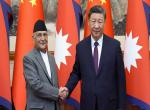India has finally done an Anti-Satellite Technology (ASAT) test. This was overdue as a demonstration of India’s capability – and that demonstration was done in the context of technologies of present day. The test was of a ‘kinetic kill’ of an orbiting satellite in the low earth orbit (LEO) at a height of approximately 300 km from ground. Success of this test and all associated maneuvers in space no doubt opens a significant vista in India’s emergence in its own right for due reckoning in the arena of exploration and intervention in space.
Though the term ASAT weapon has somehow become standard usage, there is no weapon in the sense of a readymade instrument for employing against any satellite. For example, unlike nuclear warheads or missiles for their delivery, stockpiling of ASAT weapons is not doable. Instead, it is a demonstration of capacity to undertake a complex set of maneuvers to indentify, track, target and attack a satellite by a kinetic kill vehicle which has on board homing device. It is thus culmination of a process that requires meticulous preparation. This kill vehicle was as explained by experts the likely third stage of a ground launched interceptor missile. In essence, most of these maneuvers are also germane to launching a satellite and placing it in a pre-determined orbit. The field of space exploration in fact is most extensively dual use. It is hard if not impossible to distinguish between a professedly non-military maneuver and its military twin.
At the height of the cold war in the nineteen eighties, ‘dual use’ figured on and off in the exchanges between the representatives of the then superpowers at the Geneva based Conference of Disarmament at a session on prevention of an arms race in outer space. The Soviet side claimed at US planning to install space based missile defence while US’ counter-allegation included references to Soviet ASAT test. The Soviets would counter that even the space shuttle was dual use. The space shuttle maneuvers about docking with a satellite or repairing it could as well be for disabling or damaging a satellite depending on the underlying intention. Both sides had carried out ASAT tests but their bilateral treaties like the Anti-Ballistic Missile (ABM) Treaty and Strategic Arms Limitation Talks (SALT) bound them against actual use of ASAT since that would interfere with the National Technical Means (NTM) of each other which were sacrosanct under the treaty provisions. Indeed the end of the nineteen eighties witnessed complete sea change in the cold war diatribes and the Intermediate Range Nuclear Forces (INF) Treaty as well as the Strategic Arms Reduction Treaty (START)-1 treaty reiterated the sanctity of satellites, NTM attacks on which was ruled out. However, technology evolution in the past three decades has spanned many frontiers related to space exploration and intervention, blurring further the distinction between military and non-military use.
Be that as it may, India’s test was done by the DRDO as an extension of its testing of missile defence interceptors. The launch was from DRDO testing range off the coast of Odisha and the target was an Indian Microsat–R placed in orbit last January. The height of 300 km was much higher than the level at which previous DRDO interceptors had been tested. At this height the entire set of problems related to target acquisition and shooting gets much more complicated. Even if it is one’s own satellite and is a known target as such, tracking it at that distance and hitting it with a kinetic kill third stage vehicle is no mean achievement. Besides, a micr-osatellite has a much smaller cross section (about 2 square meters) than a ballistic missile. So, it enhances the feat when such a target is hit while ensuring that the resulting debris is minimum and contained.
Space is so extensively militarized today that all the other three space powers have space commands. They all have carried out ASAT tests; the last one being by China in January 2007. Chinese intervention at the UN Committee on Peaceful Uses of Outer Space (UNCOPUOS) which was in session when the test was done, was instructive. The Chinese representative, after listening to a full range of statements expressing utmost concern about China’s tests recounted in his country’s defence how such tests were done earlier too. And he professed China’s peaceful intent. In 2007 the INF treaty was still in force and so were restrictions on use of ASAT capability of the US and Russian Federation. China had no such obligation.
Peaceful uses of outer space are so intricately mixed up in the dual use matrix today that utmost care has to be taken to guard against any miscommunication to an adversary about avowed purpose of activities. The long standing “general purpose criterion” which has underpinned most arms limitation agreements is of critical merit in the context of outer space. So, a capability with a clear declaration of purpose is all that we can demonstrate.
Hence arises the need for India for a statement at the highest level. The statement made by the Prime Minister on 27 March highlights the most significant progress achieved in a challenging mission. It also clearly emphasizes the avowed peaceful purpose and declares intention that such capability is not against any nation. India has not violated any international accord by this test. The relevant international instrument in this regard is the 1967 Outer Space Treaty which banned in good faith (i.e. without any verification provisions) any placement of nuclear or other weapons of mass destruction in outer space. The Outer Space Treaty has articles binding states parties to liability about damage caused by their activities, inter alia, to other party’s space objects (Article VII) and extensive mutual responsibility about non-interference in each other’s space activities (Article IX). India’s ASAT testing does not come into conflict with the Outer Space Treaty as the satellite was our own and there was no interference with any other party’s space activities. A notice was issued in advance about the launch of the interceptor missile. As explained in the statements issued after the test, the destroyed satellite was a micro-satellite in LOE whose debris will be contained and gradually fall into atmosphere to burn out in a matter of weeks.
Of course, there are other technological ASAT options too. But the kinetic kill option is more suitable than the other alternatives. There is talk of using lasers, either ground launched or from a platform in upper atmosphere such as an F 16 aircraft. But authentic reports are lacking about successful test of such lasers for blinding or damaging a satellite. China’s test of such blinding laser was not officially confirmed. While a kinetic kill vehicle can in principle be maneuverable with on board controls, a laser falls inherently in a fire-and –forget mode and once fired has better be on target since consequence of error can be disastrous. An electro-magnetic pulse (EMP) device or weapon close to a given satellite could damage all its electronics and thus render it unusable. Though there are a lot of speculative reports in this regard the prevailing sentiment is of skepticism because of collateral risks to neighboring satellites. President Trump, it is reported, has recently given an order to Pentagon about EMP preparedness; the details are not known.
Launching of a satellite with electronic jamming equipment and placing it in close proximity of the target is another option on the menu discussed in the ASAT context but that may have a conflict with the main articles of the Outer Space Treaty (Article III AND IV). It must be recalled that the earliest ASAT options resorted to attacks by some kind of warheads which entailed risks of spreading debris more extensively.
The most scary aspect of interference with space assets stems from the cyber domain. Since the entire paraphernalia of space exploration and intervention depends on C4I (Command, Control, Communication, Computing and Intelligence), their vulnerability has increased to hostile activities in the cyber domain. Space powers have made allegations against each other over the past decade about cyber attacks. The technological advances in regard to faster and faster computers threaten to disrupt the core of space faring i.e. encryption, especially if quantum computing registers the desired success. Indeed if encryption can be challenged, the secrecy surrounding space assets and thereby their military utility will be impaired considerably. To an optimist though, greater transparency may follow which may splinter the aura of exotic frontiers of battle.
In this kind of setting the choice of technology pursued by DRDO is warranted. At the present stage of technology and contention in space domain, it is also important for India to develop capability for what is called Space Situational Awareness, which essentially comprises sensors on board or elsewhere in space to monitor chance of collision and possible hostile action against a space object. As space becomes more intensive arena for conflict, such capability becomes an integral component of a nation’s preparedness. The ASAT test in this respect breaks the self imposed shackles on India’s technology development.
(The author is a former ambassador to Austria and former Permanent Representative to UN Office in Vienna. He has served in the IAEA Board of Governors and as a Secretary General SAARC. He is a Distinguished Fellow at the Centre for Air Power Studies)
Image Source: https://img.etimg.com/thumb/msid-68616066,width-300,imgsize-351993,resizemode-4/us-reconnaissance-aircraft-monitors-indias-asat-missile-test-plane-spotter-aircraft-spots.jpg










Post new comment